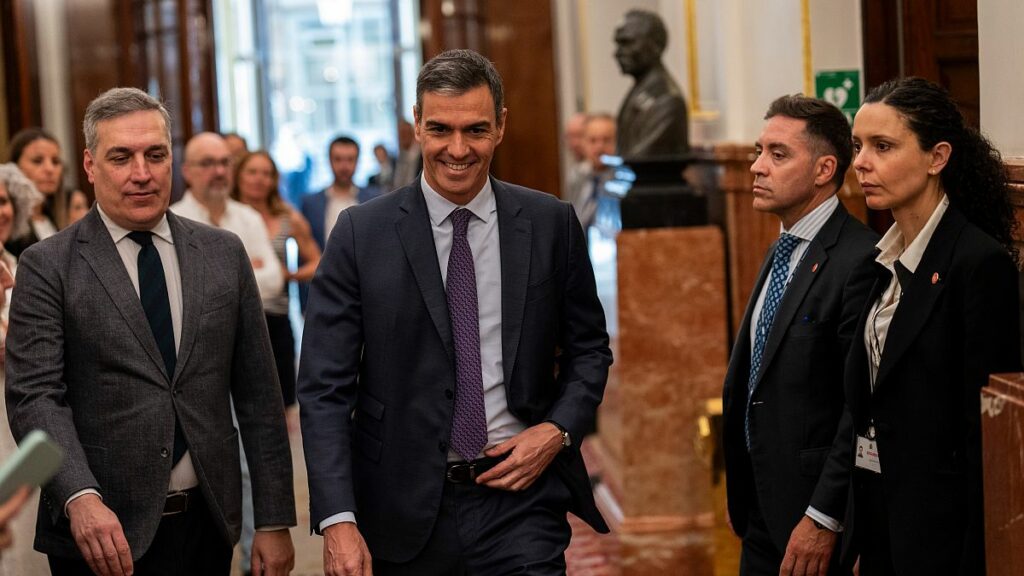This time traditionally European issues such as migration or agricultural protests have been overshadowed by domestic matters.
“During the second half of the campaign, especially from Wednesday onwards, clearly national issues have regained momentum Simón told Euronews.
“And this has to do with the indictment and summons to testify of the president’s wife, which has again placed the focus on domestic politics, turning it into a plebiscite on the government rather than issues linked to Europe.”
The campaign has mainly focused on the rise of the far-right and future alliances in the European Parliament. “It is basically the European climate. The climate of opinion is connected with the rise of the far-right, and this fits very well with the same dynamic that we have experienced in Spain in recent years. In other words, ‘Spain is not different’. Spain has had topics of discussion quite similar to those of other countries in our surroundings,” explained Simón.
As the campaigns progressed, issues such as the Green Deal and agricultural reforms were largely subsumed under broader discussions about potential parliamentary alliances.
“Public policies like the Green Deal or agricultural policy have been overshadowed by the main topic of potential alliances, particularly with the far-right,” Simón emphasized.
While national parties try to gauge their strength in the elections, turnout remains a crucial factor. Barely 40% of Spaniards typically go to the polls in European elections.
“The majority of polls indicate that the results we will see in the upcoming elections will not be very different from those in the Congress of Deputies. That is, we will have a delegation more inclined to the right, probably more Eurosceptic, with the Popular Party and the Socialist Party concentrating most of the support,” Simón explained.
But he said that turnout could be higher than in previous EU elections, given the impact of European issues on the Spanish electorate. “The participation rate should rise, given the polarisation we are experiencing. We typically see participation rates of around 44-46%, but our goal should be to approach the 51% average seen in other European countries.”
The polarisation that Spanish society is experiencing will most likely generate an increase in participation in these elections. But it could also turn off people who would usually vote, since Spain has endured three national elections since April 2019 and almost back- to-back election campaigns.
Source link : https://www.euronews.com/my-europe/2024/06/07/spains-weary-and-still-divided-voters-go-to-the-polls-once-more
Author :
Publish date : 2024-06-07 13:04:15
Copyright for syndicated content belongs to the linked Source.
